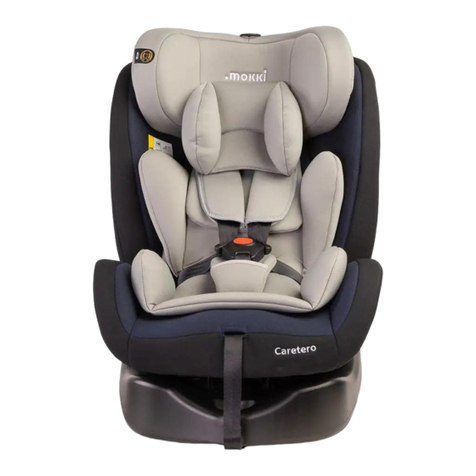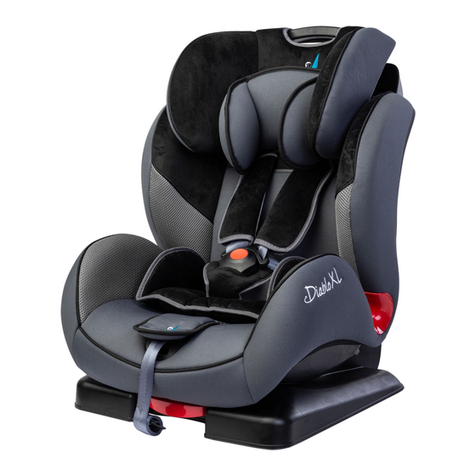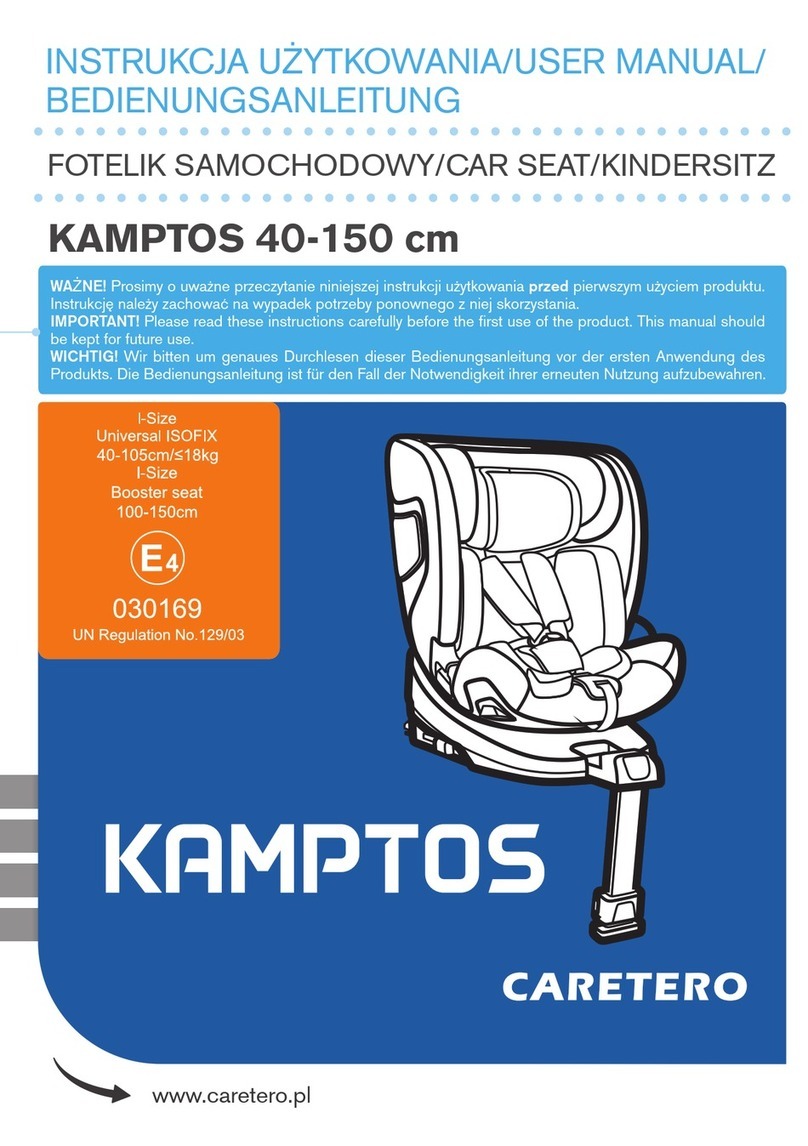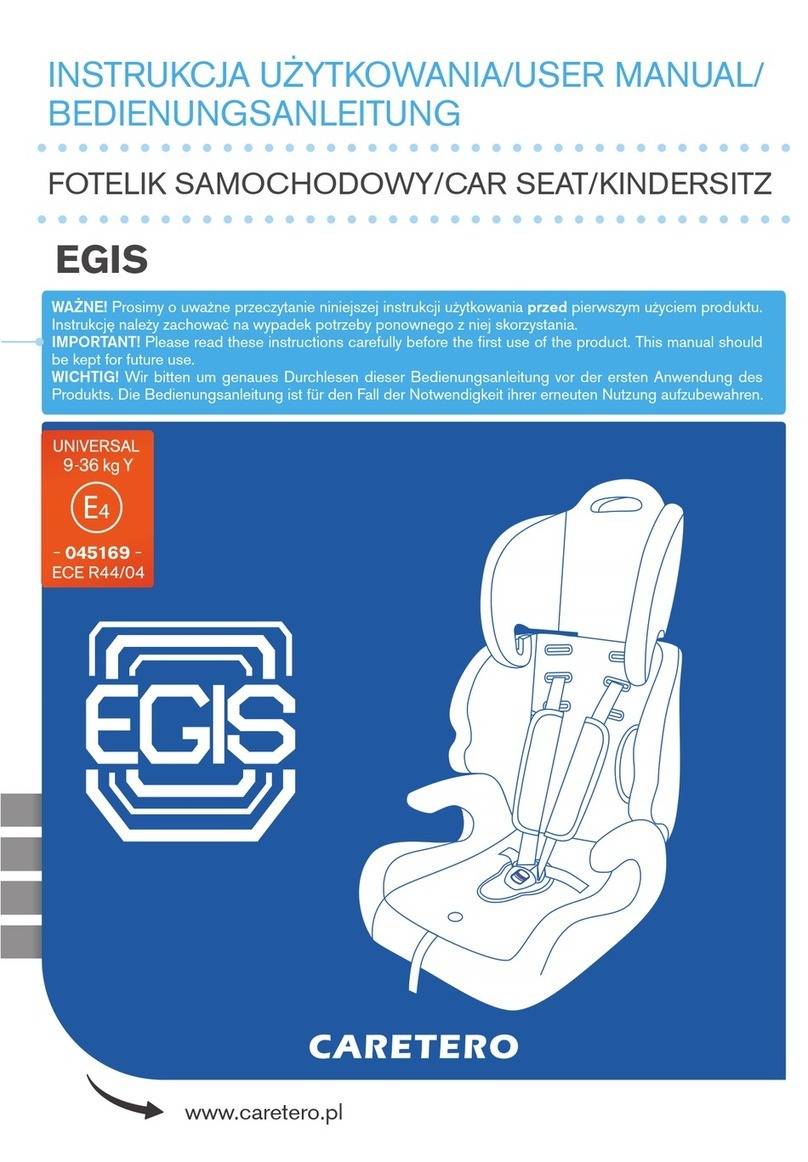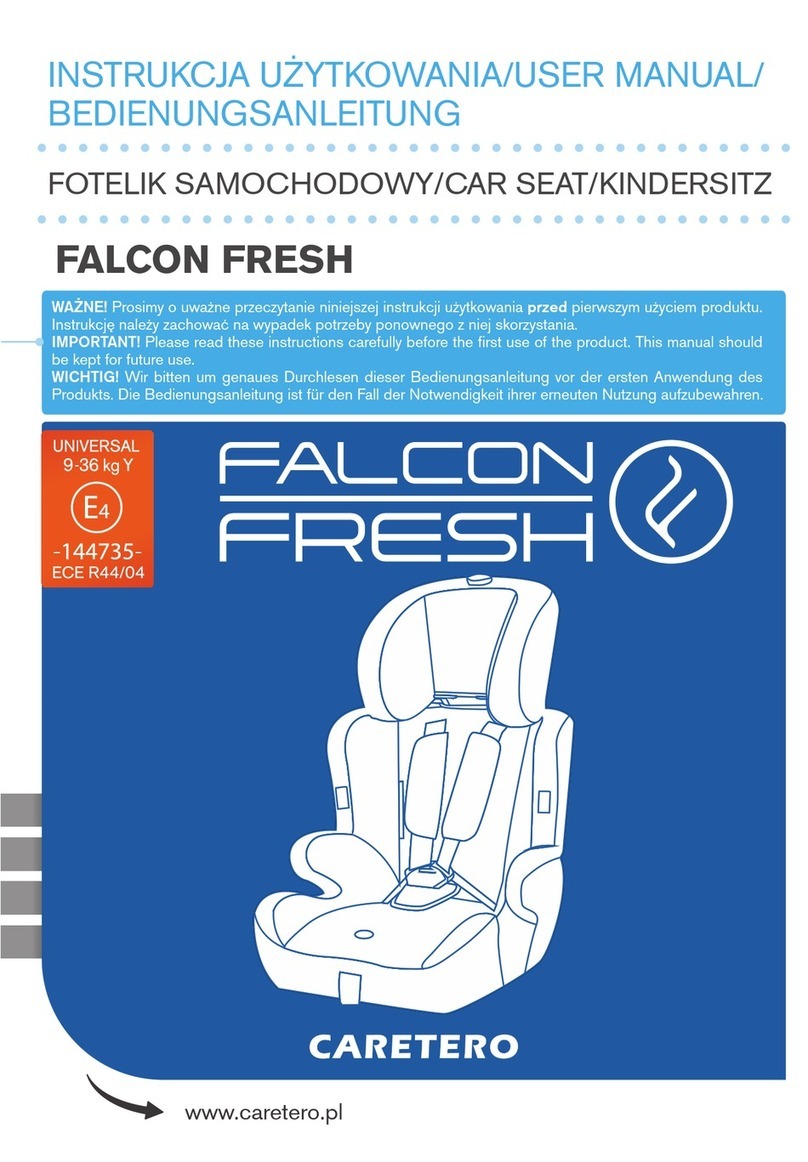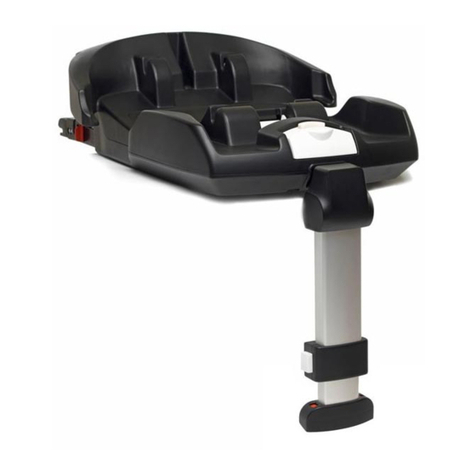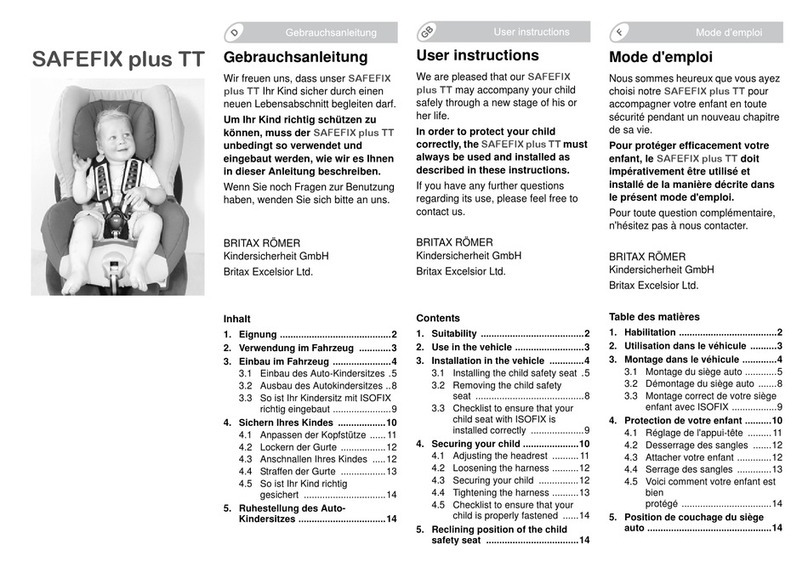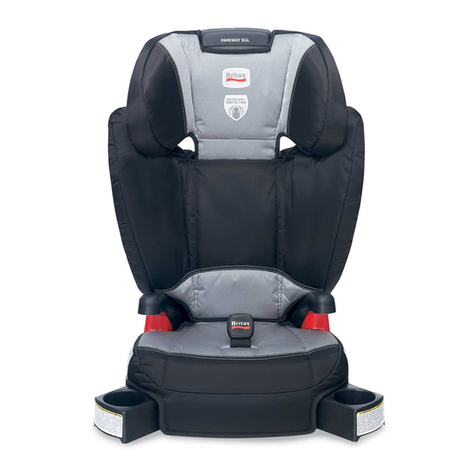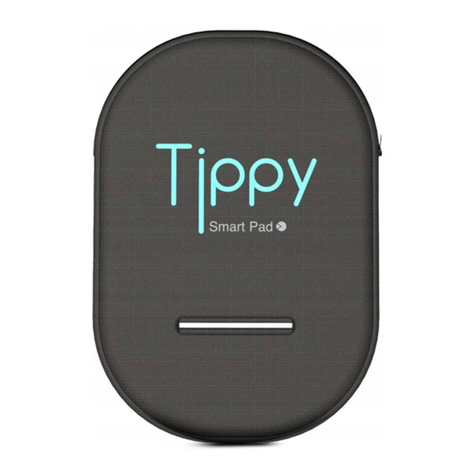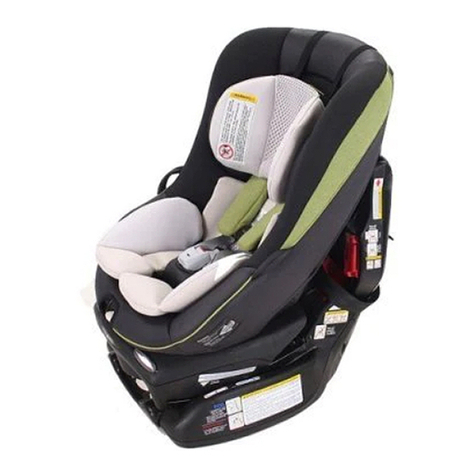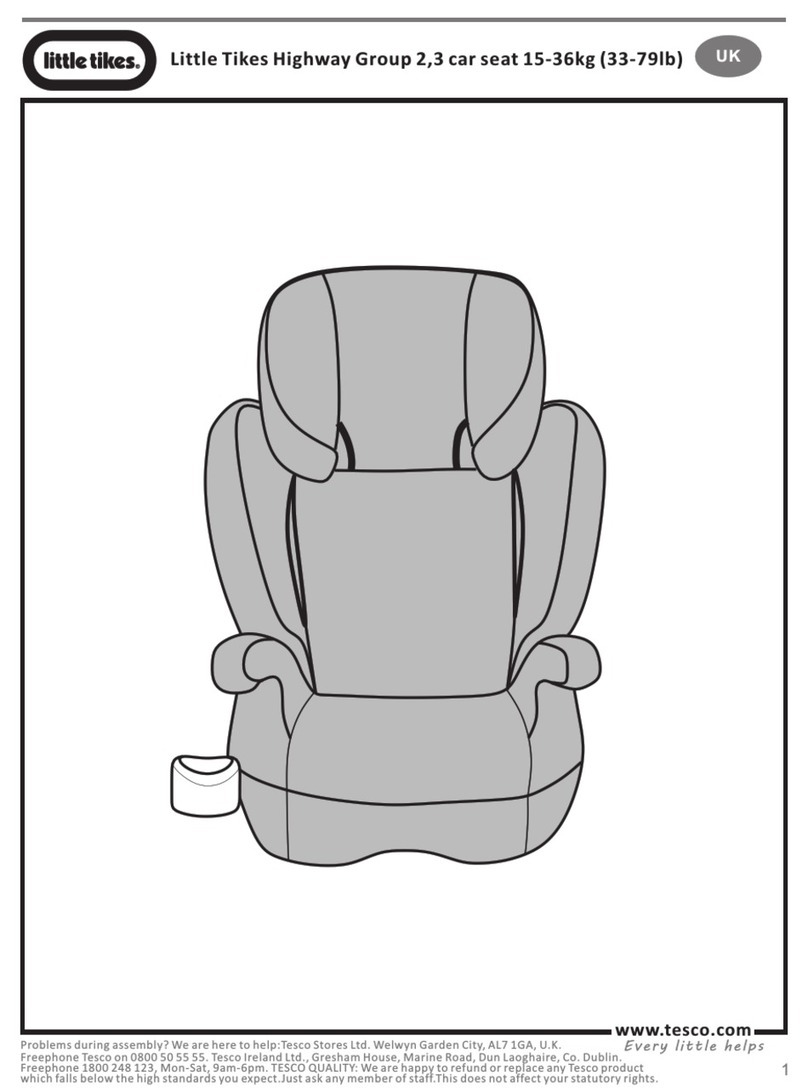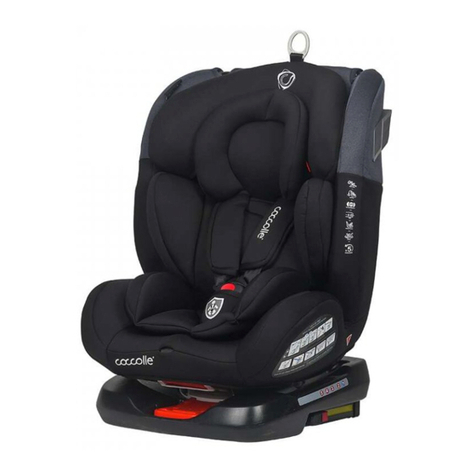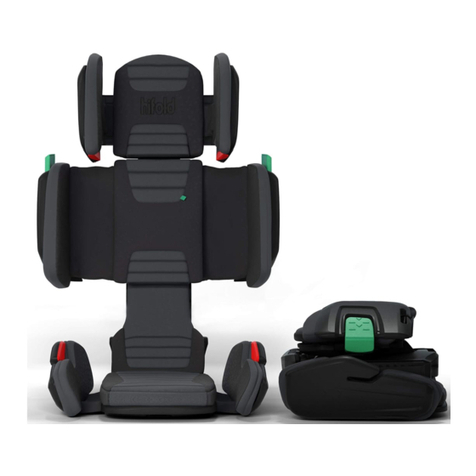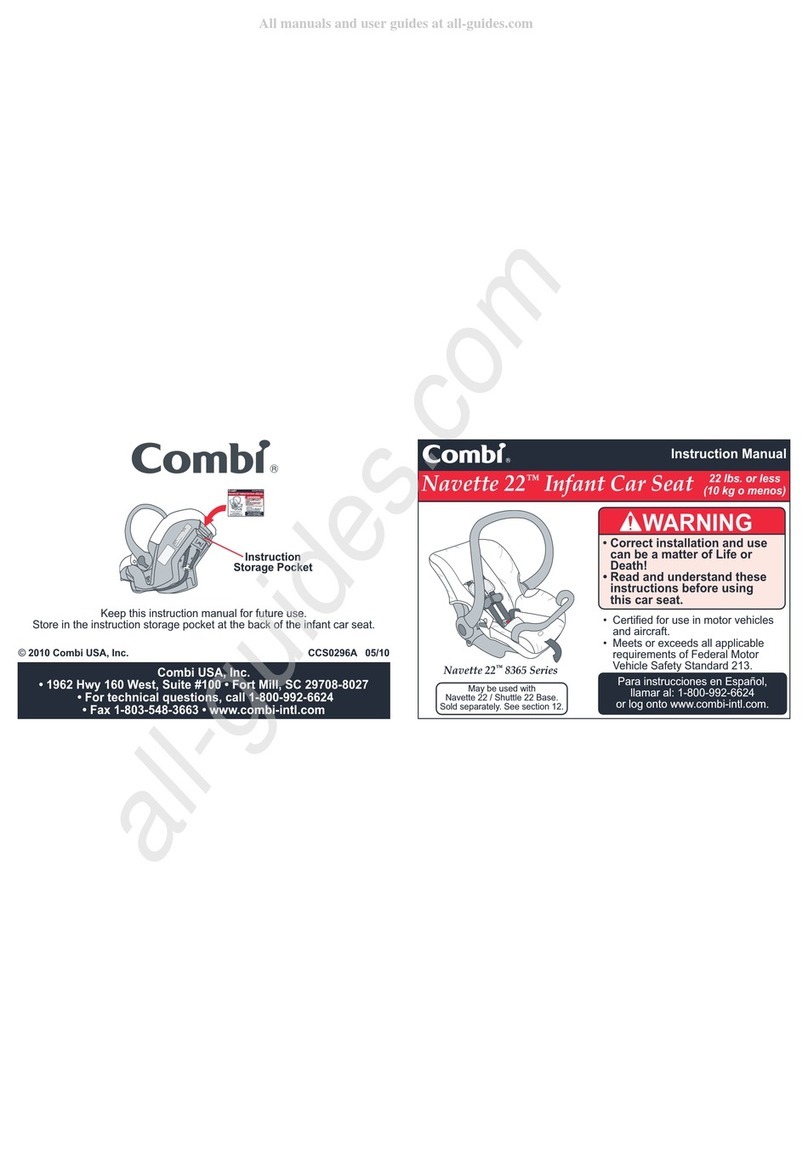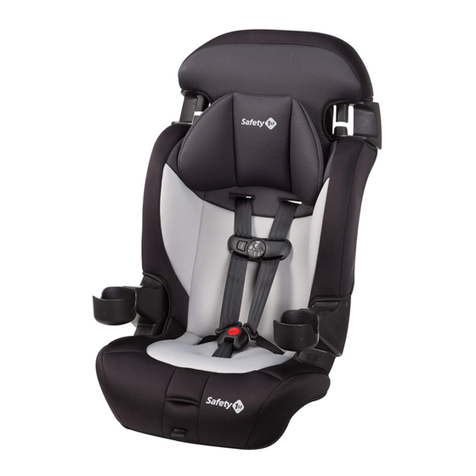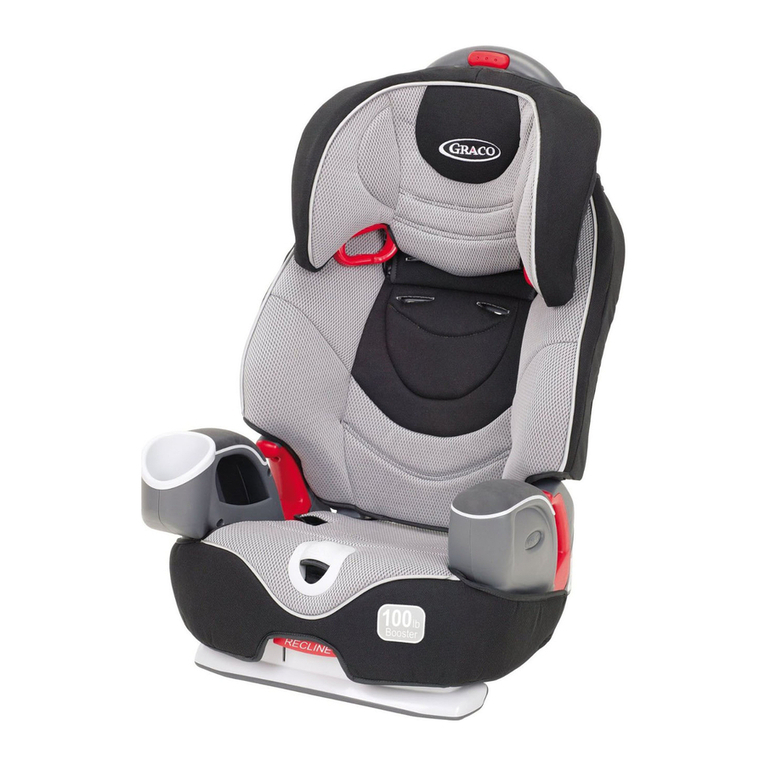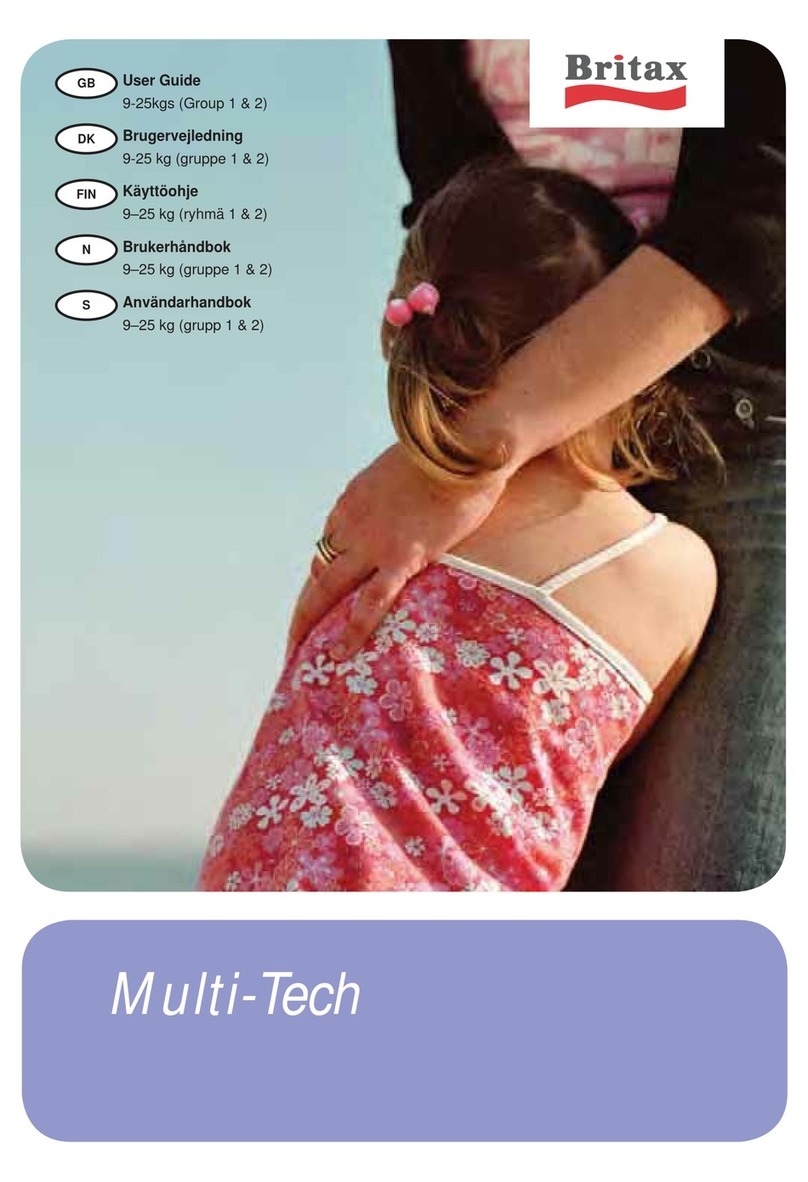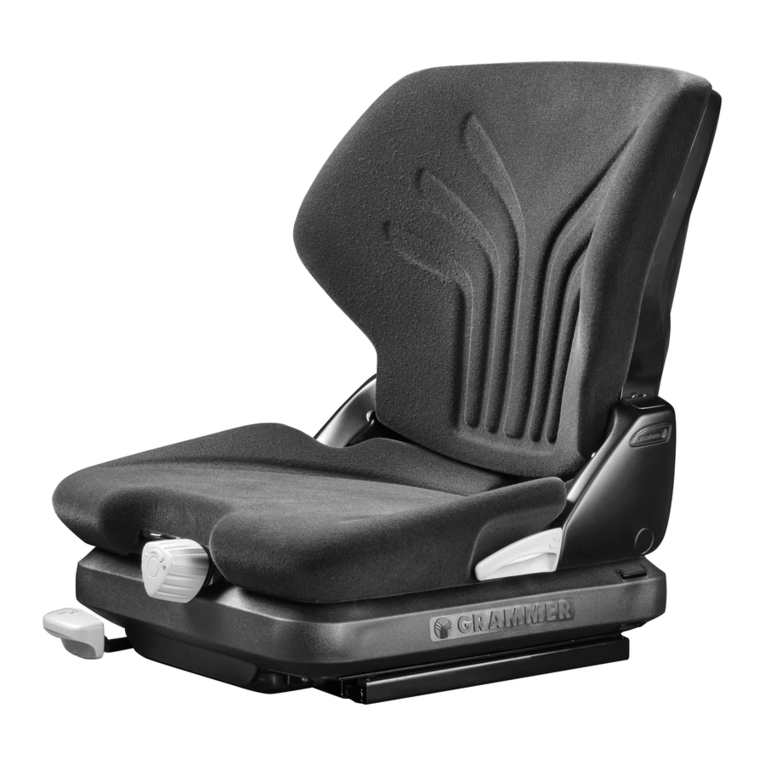
9
2WSKAZÓWKI BEZPIECZEŃSTWA
PONIŻSZE INSTRUKCJE OBSŁUGI SĄ WAŻNE.
PRZED UŻYTKOWANIEM NALEŻY PRZECZYTAĆ NINIEJSZĄ INSTRUKCJĘ I ZACHOWAĆ JĄ NA PRZYSZŁOŚĆ.
BEZPIECZEŃSTWO DZIECKA MOŻE BYĆ ZAGROŻONE, JEŚLI ZALECENIA NINIEJSZEJ INSTRUKCJI NIE BĘDĄ
STOSOWANE.
UWAGA!!!
1. Jest to „Uniwersalne" ograniczenie dotyczące fotelików dziecięcych, zgodne z Przepisem ECE (Europejska Komisja
Gospodarcza ONZ) 44.04 dotyczącym ogólnego użytkowania fotelików w pojazdach. Foteliki tego typu pasują do
większości siedzeń samochodowych.
2. Odpowiedni montaż fotelika w samochodzie możliwy jest, jeśli producent samochodu zadeklarował w instrukcji
obsługi pojazdu, że pojazd jest przystosowany do „Uniwersalnych" ograniczeń dotyczących fotelików dziecięcych tej
grupy.
3. Ograniczenie to funkcjonuje jako „Uniwersalne" na surowszych warunkach niż te zastosowane wobec wcześniej-
szych modeli, które nie posiadały tej adnotacji.
4. W razie wątpliwości należy skontaktować się z producentem albo sprzedawcą detalicznym.
Fotelik tego typu nadaje się tylko do pojazdu wyposażonego w pasy bezpieczeństwa z 3-punktową blokadą i 3-punkto-
wym elementem zwijającym, co jest zgodne z Przepisem UN/ECE nr 16 lub innymi równoznacznymi standardami.
OSTRZEŻENIE! Dla bezpieczeństwa mocującego fotelik:
• Przy otwieraniu lub zamykaniu nic nie może wejść pomiędzy siedzisko i podstawę fotelika. Mogłoby to doprowadzić
do przycięcia palców.
• W celu uniknięcia uszkodzeń uważać, aby nie zaklinować fotelika pomiędzy twardymi elementami pojazdu (drzwi,
prowadnice siedzenia itp.).
• Przechowywać fotelik dla dziecka w bezpiecznym miejscu jeżeli nie jest użytkowany. Unikać kładzenia na nim ciężkich
przedmiotów i nie przechowywać w pobliżu źródeł ciepła lub w bezpośrednim nasłonecznieniu.
OSTRZEŻENIE! Dla ochrony pojazdu:
• Na niektórych obiciach siedzeń samochodowych wykonanych z delikatnego materiału (np. z weluru, skóry itp.) mogą
wystąpić ślady zużycia powstałe na skutek użytkowania fotelika. W celu zapewnienia odpowiedniej ochrony obić foteli
zalecamy stosowanie ochraniaczy na siedzenia samochodowe z oferty Akcesoria Caretero.
OSTRZEŻENIE! Dla ochrony wszystkich pasażerów pojazdu.
W razie gwałtownego hamowania lub wypadku osoby lub przedmioty, które nie zostały odpowiednio zabezpieczone,
mogą być przyczyną urazów pozostałych pasażerów pojazdu. Z tego powodu należy się upewnić, że:
• Oparcia siedzeń pojazdu są zablokowane (np. upewnić się, że zatrzask na tylnym siedzeniu składanym jest
zablokowany).
• Wszelkie ciężkie lub posiadające ostre krawędzie przedmioty w pojeździe zostały zabezpieczone (np. przedmioty
znajdujące się na półce pod tylnym oknem).
• Wszystkie osoby w pojeździe mają zapięte pasy.
• Fotelik znajdujący się w samochodzie jest zawsze zabezpieczony, nawet jeśli dziecko nie znajduje się w foteliku.
NIEBEZPIECZEŃSTWO! Dla ochrony dziecka:
• Stosować fotelik Caretero Sport Classic wyłącznie do zabezpieczenia dziecka w pojeździe.
• Fotelik samochodowy dla dzieci o wadze od 9 do 18 kg (Grupa I) należy używać z pasami 5-punktowymi fotelika.
• Fotelik samochodowy należy montować jedynie przodem do kierunku jazdy, używając do tego 3-punktowego pasa
bezpieczeństwa na biodra i ukośnego na klatkę piersiową
• Nie należy umieszczać fotelika na siedzeniu z włączoną poduszką powietrzną.
• Przed każdą podróżą należy sprawdzić, czy fotelik samochodowy jest dobrze umocowany.
• Najbezpieczniejszym miejscem do montażu fotelika w samochodzie jest tylne siedzenie.

